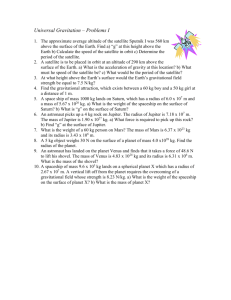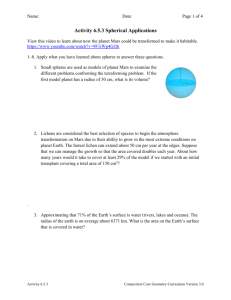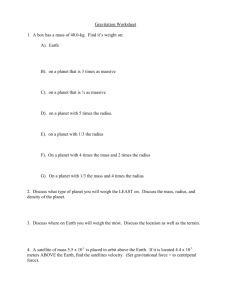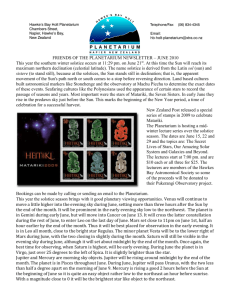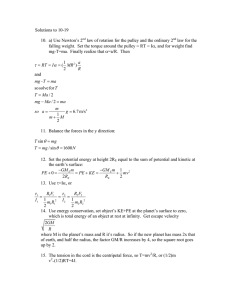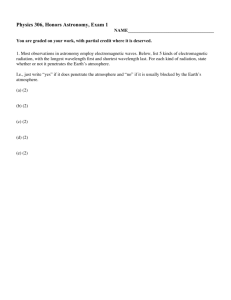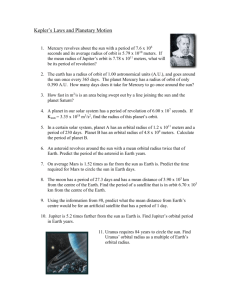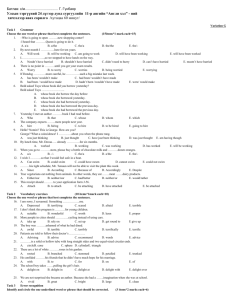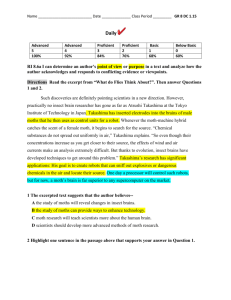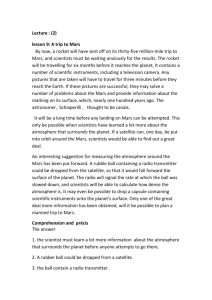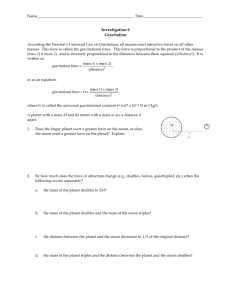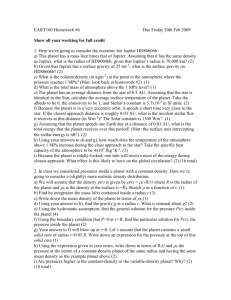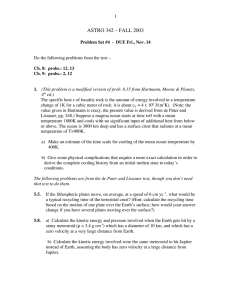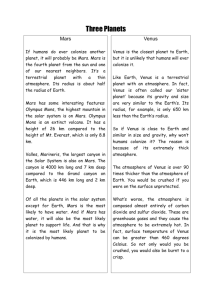astro340f07.hw3
advertisement
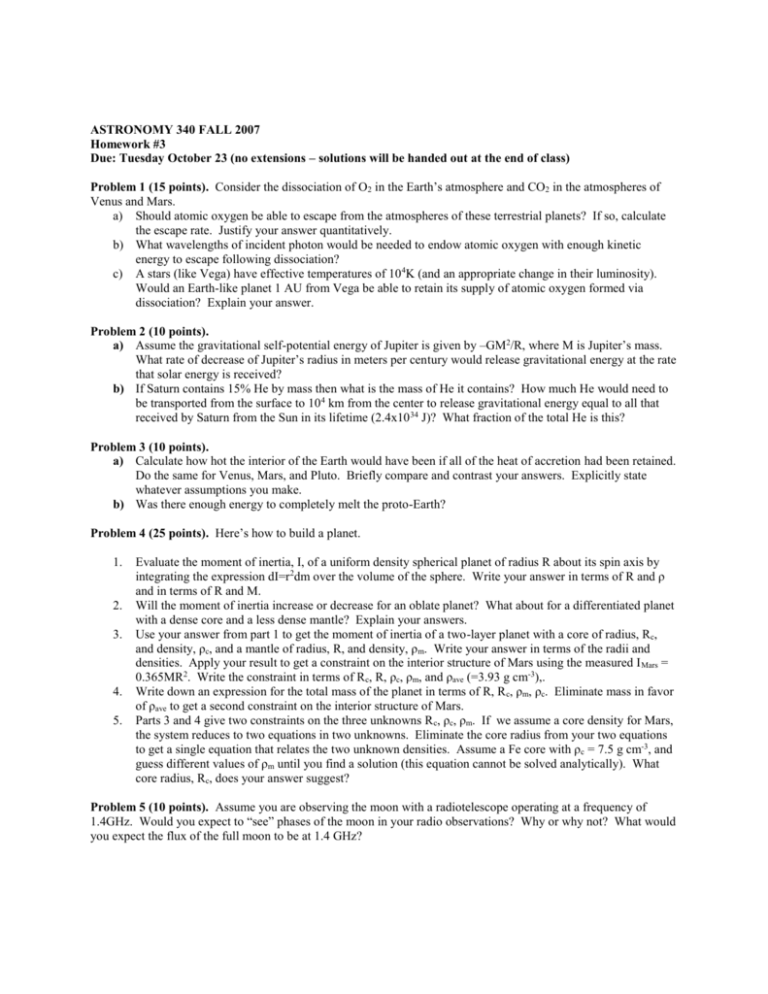
ASTRONOMY 340 FALL 2007 Homework #3 Due: Tuesday October 23 (no extensions – solutions will be handed out at the end of class) Problem 1 (15 points). Consider the dissociation of O2 in the Earth’s atmosphere and CO2 in the atmospheres of Venus and Mars. a) Should atomic oxygen be able to escape from the atmospheres of these terrestrial planets? If so, calculate the escape rate. Justify your answer quantitatively. b) What wavelengths of incident photon would be needed to endow atomic oxygen with enough kinetic energy to escape following dissociation? c) A stars (like Vega) have effective temperatures of 10 4K (and an appropriate change in their luminosity). Would an Earth-like planet 1 AU from Vega be able to retain its supply of atomic oxygen formed via dissociation? Explain your answer. Problem 2 (10 points). a) Assume the gravitational self-potential energy of Jupiter is given by –GM2/R, where M is Jupiter’s mass. What rate of decrease of Jupiter’s radius in meters per century would release gravitational energy at the rate that solar energy is received? b) If Saturn contains 15% He by mass then what is the mass of He it contains? How much He would need to be transported from the surface to 104 km from the center to release gravitational energy equal to all that received by Saturn from the Sun in its lifetime (2.4x10 34 J)? What fraction of the total He is this? Problem 3 (10 points). a) Calculate how hot the interior of the Earth would have been if all of the heat of accretion had been retained. Do the same for Venus, Mars, and Pluto. Briefly compare and contrast your answers. Explicitly state whatever assumptions you make. b) Was there enough energy to completely melt the proto-Earth? Problem 4 (25 points). Here’s how to build a planet. 1. 2. 3. 4. 5. Evaluate the moment of inertia, I, of a uniform density spherical planet of radius R about its spin axis by integrating the expression dI=r2dm over the volume of the sphere. Write your answer in terms of R and ρ and in terms of R and M. Will the moment of inertia increase or decrease for an oblate planet? What about for a differentiated planet with a dense core and a less dense mantle? Explain your answers. Use your answer from part 1 to get the moment of inertia of a two-layer planet with a core of radius, Rc, and density, ρc, and a mantle of radius, R, and density, ρ m. Write your answer in terms of the radii and densities. Apply your result to get a constraint on the interior structure of Mars using the measured I Mars = 0.365MR2. Write the constraint in terms of Rc, R, ρc, ρm, and ρave (=3.93 g cm-3),. Write down an expression for the total mass of the planet in terms of R, R c, ρm, ρc. Eliminate mass in favor of ρave to get a second constraint on the interior structure of Mars. Parts 3 and 4 give two constraints on the three unknowns Rc, ρc, ρm. If we assume a core density for Mars, the system reduces to two equations in two unknowns. Eliminate the core radius from your two equations to get a single equation that relates the two unknown densities. Assume a Fe core with ρc = 7.5 g cm-3, and guess different values of ρm until you find a solution (this equation cannot be solved analytically). What core radius, Rc, does your answer suggest? Problem 5 (10 points). Assume you are observing the moon with a radiotelescope operating at a frequency of 1.4GHz. Would you expect to “see” phases of the moon in your radio observations? Why or why not? What would you expect the flux of the full moon to be at 1.4 GHz?


